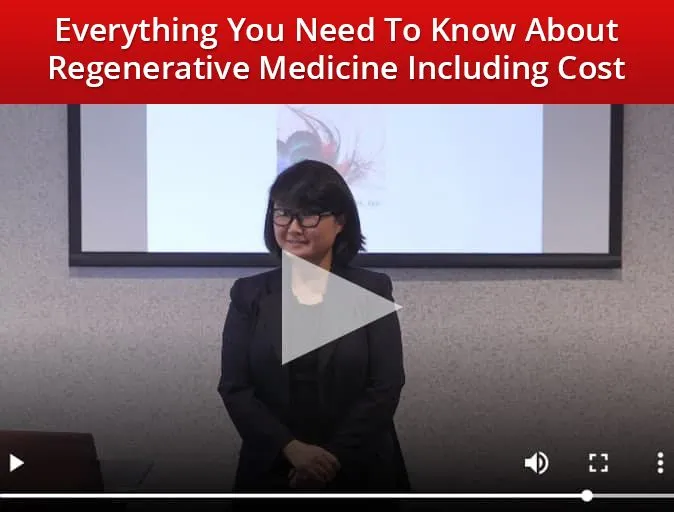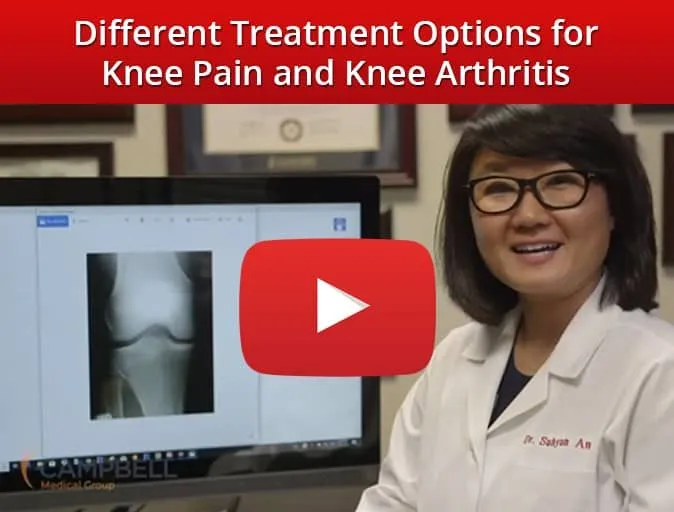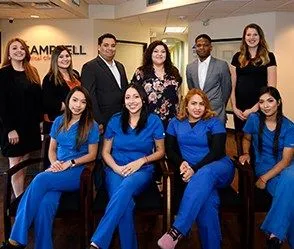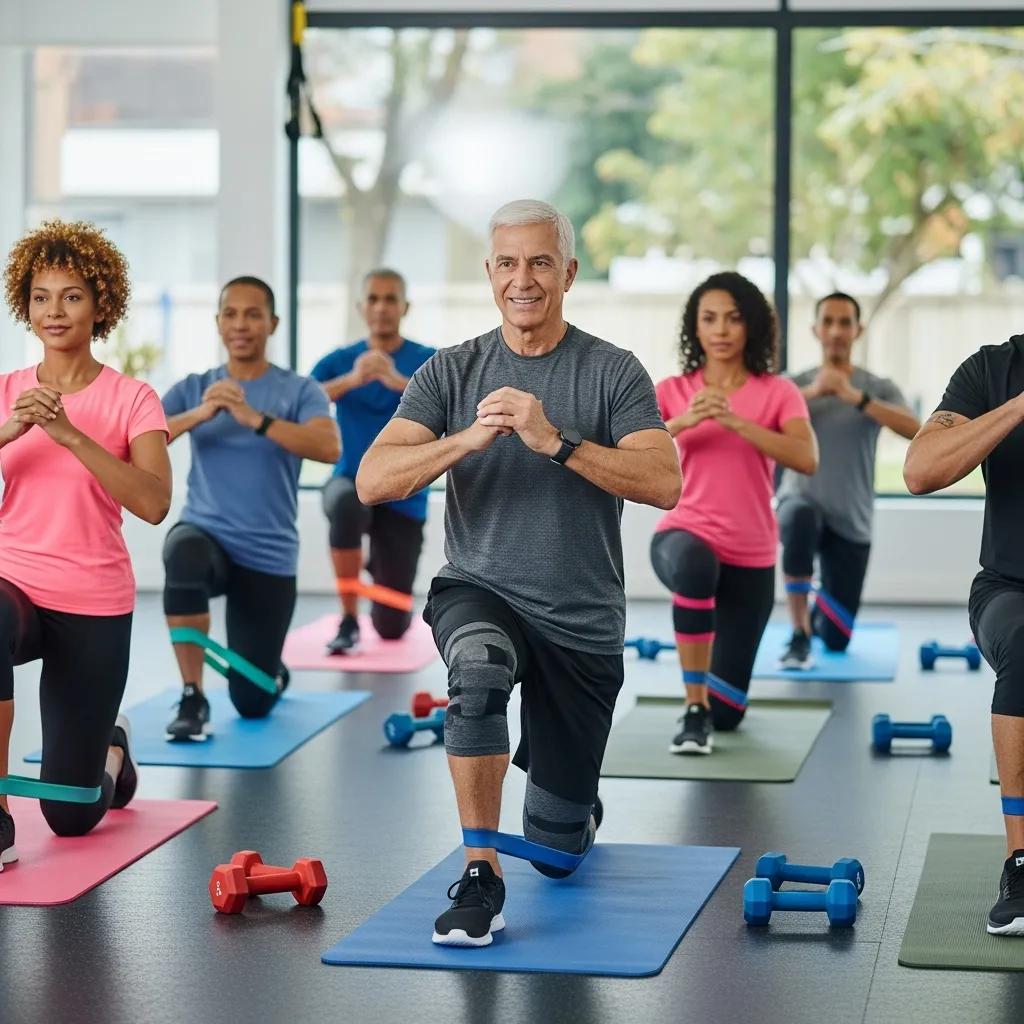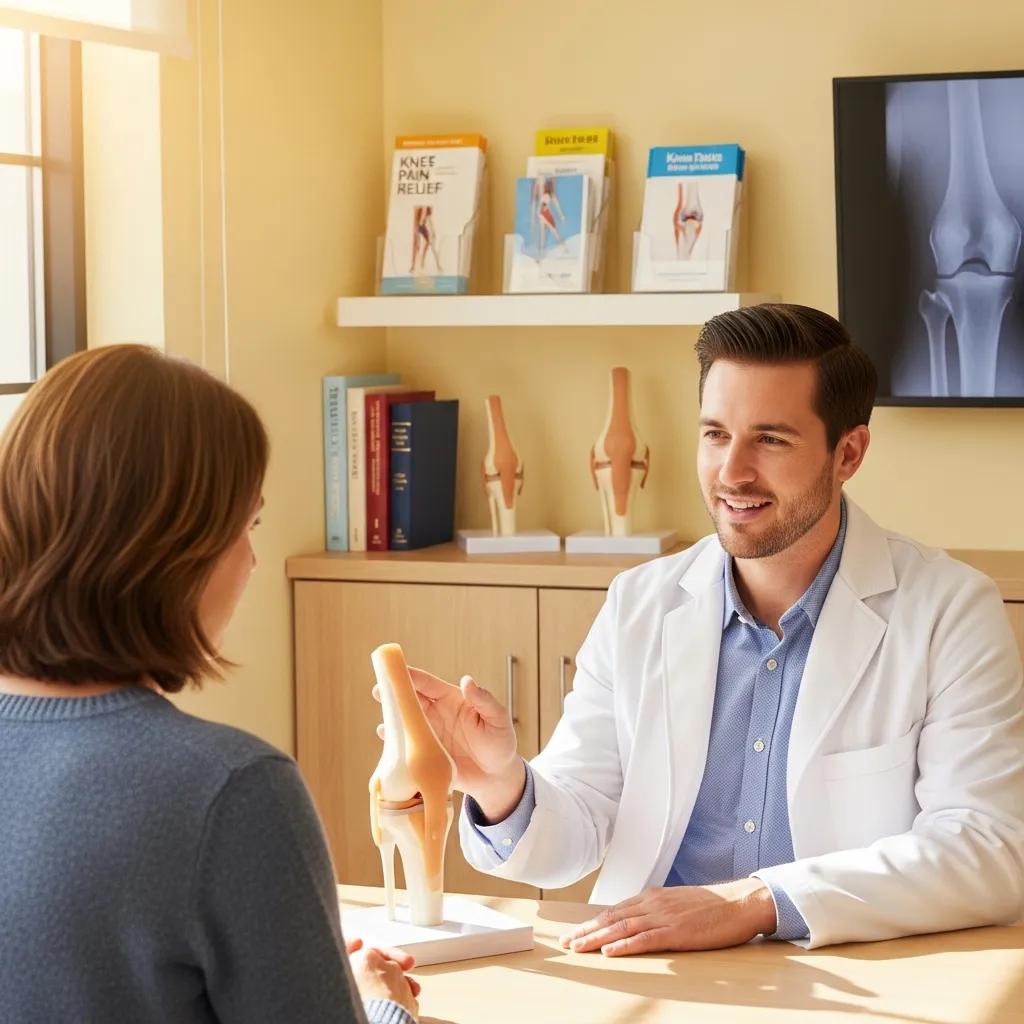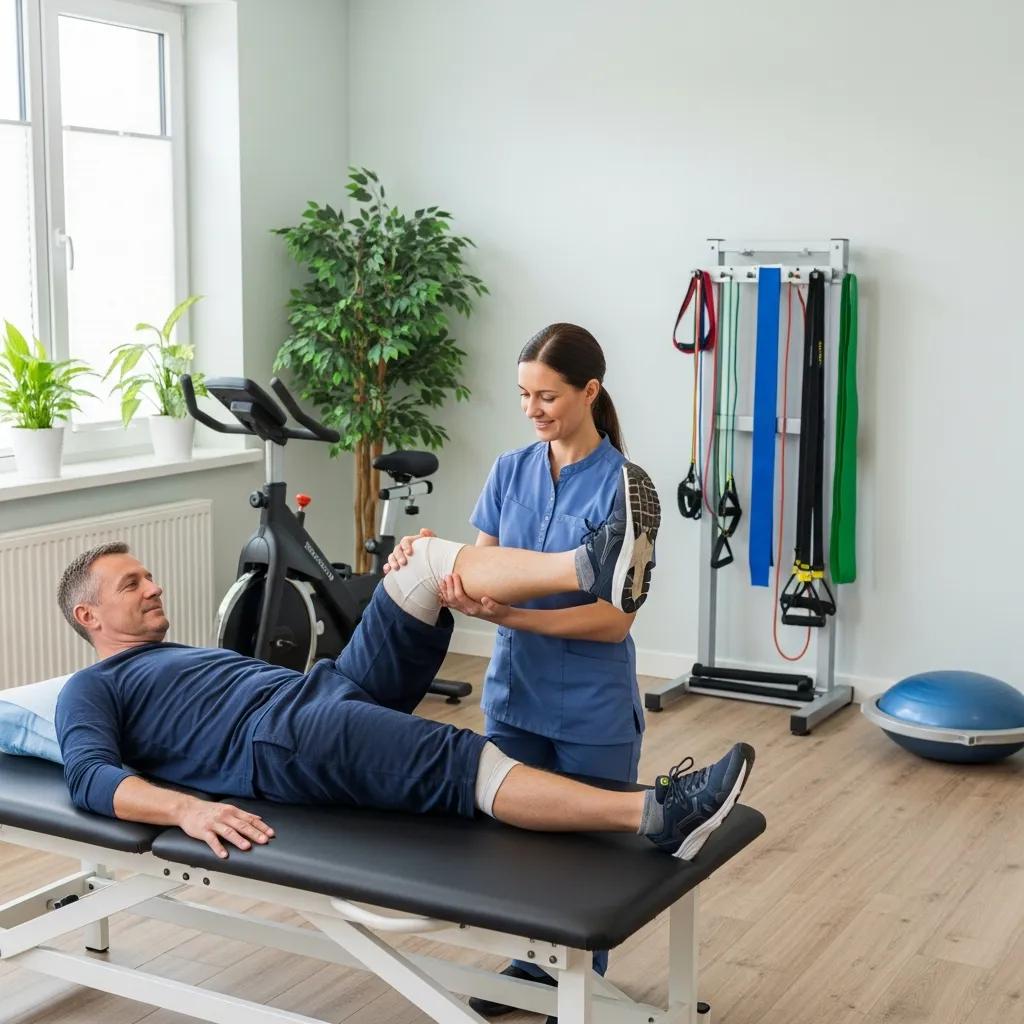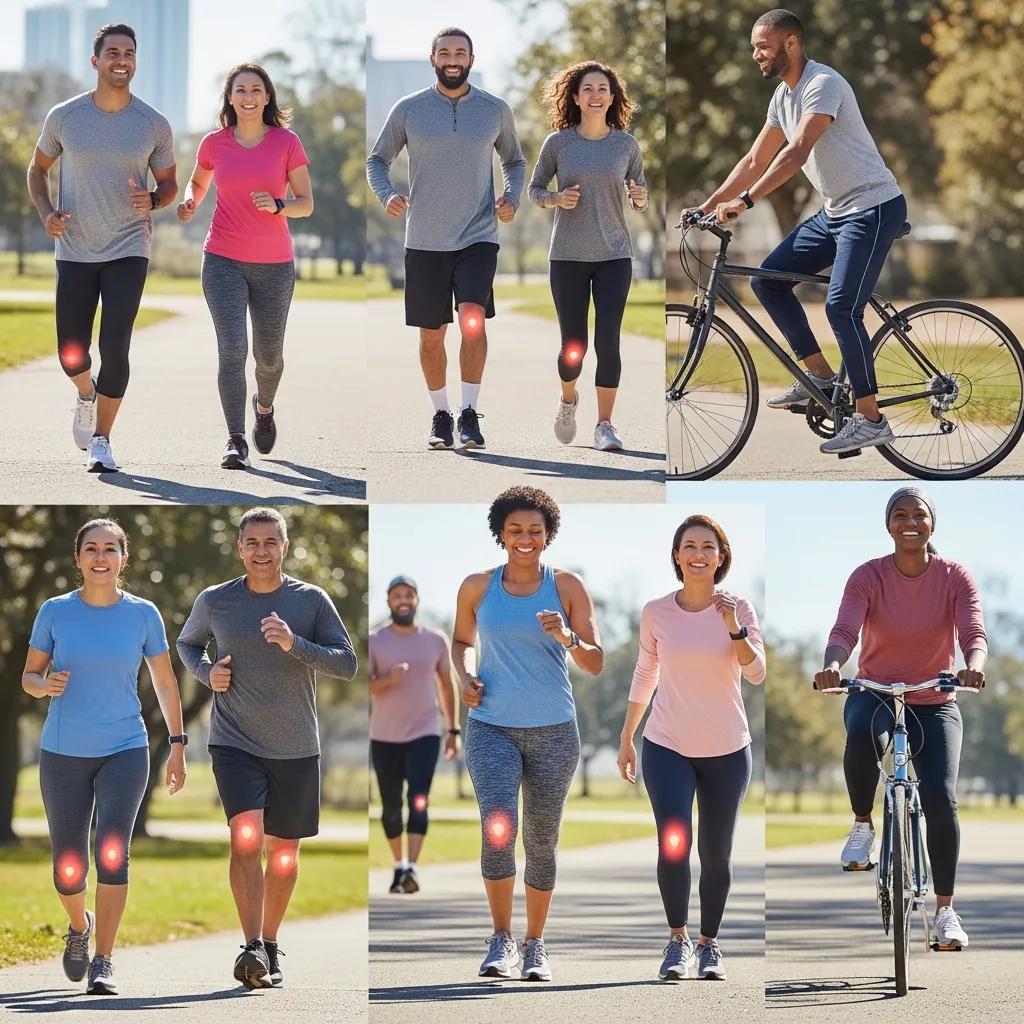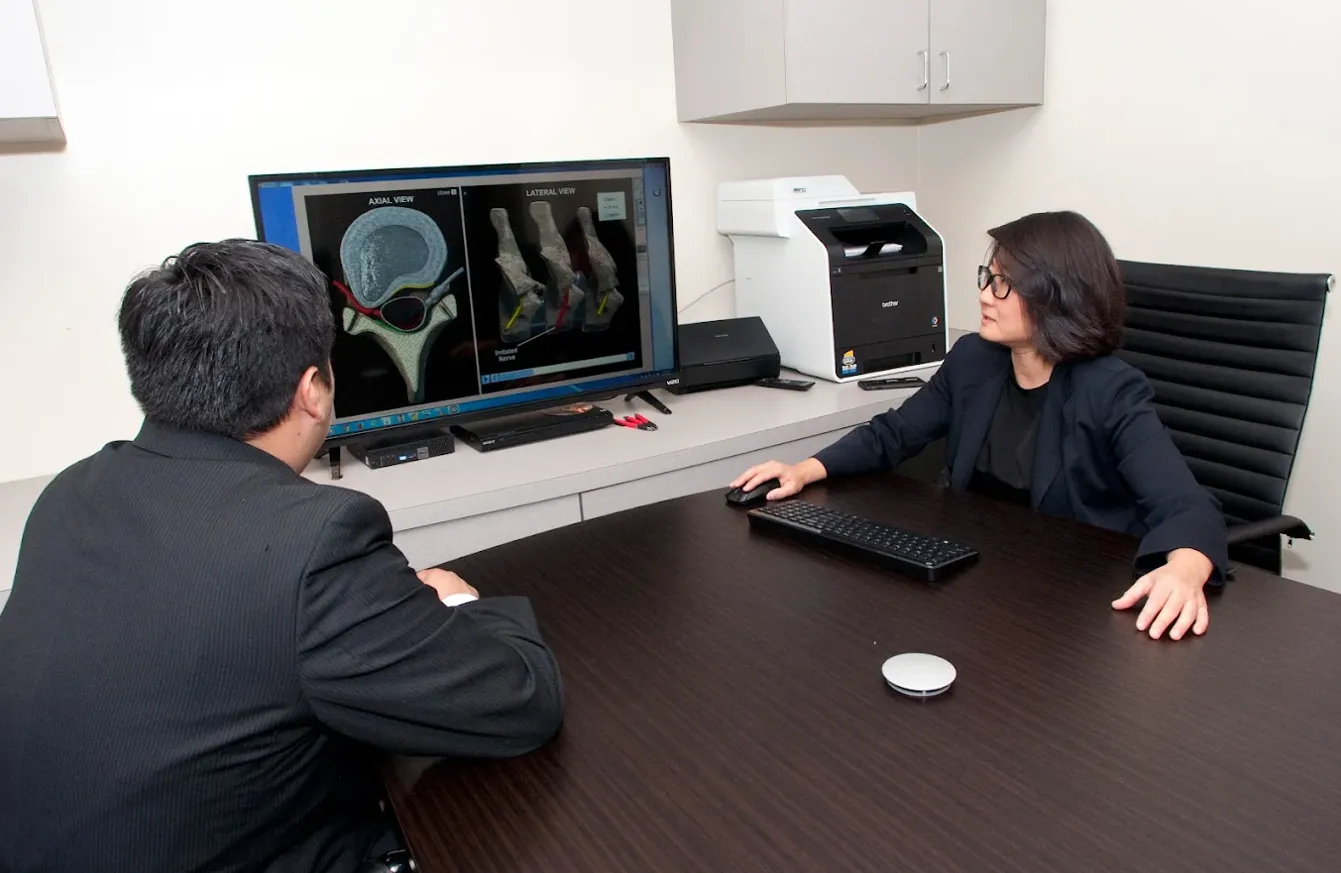
Pain Free Knee by Suhyun An: Non-Surgical Knee Pain Solutions and Regenerative Therapy Guide
Knee pain limits daily life for millions, and a clear, non-surgical pathway can restore mobility without immediate surgery. This guide explains how Suhyun An — clinician, Clinic Director, and author of The “Pain-Free Knee” — integrates regenerative medicine, exercise-based rehabilitation, and lifestyle strategies to reduce pain and improve function. Readers will learn what causes chronic knee pain, how regenerative therapies like stem cell and PRP work, and which exercises and gait changes produce durable improvements. The article maps Suhyun An’s practitioner rationale, summarizes core principles from The “Pain-Free Knee”, and provides practical options available through Campbell Medical Group in Houston, Texas. Practical sections include evidence-aligned treatment comparisons, structured exercise guidance, realistic recovery timelines, and answers to common patient questions to help you choose a safe, sustainable path for knee health.
What Causes Chronic Knee Pain and How Does It Affect You?
Chronic knee pain is persistent discomfort or functional limitation in or around the knee that lasts months and interferes with daily activity. The condition arises from structural damage, inflammatory processes, and altered biomechanics that increase joint load and pain signaling; addressing these mechanisms reduces pain and restores mobility. Understanding the root causes helps prioritize conservative care, targeted rehabilitation, and, when appropriate, regenerative options that aim to modulate inflammation and improve tissue resilience. This section breaks down the major contributors and their typical impacts so you can recognize which pathways are most relevant to your symptoms and follow-up care.
What is Knee Arthritis and Its Symptoms?
Knee arthritis, most commonly osteoarthritis, is progressive degeneration of articular cartilage and changes in the joint that cause pain, stiffness, and reduced range of motion. Mechanical wear and tear, combined with inflammatory mediators in the synovial fluid, lead to cartilage breakdown and osteophyte formation, which produce symptoms such as morning stiffness, crepitus, and activity-related pain. Risk factors include age-related cartilage wear, prior joint injury, obesity, and repetitive joint loading; identifying these risks informs targeted interventions like weight management and exercise therapy. Recognizing OA early allows for non-surgical strategies that focus on symptom control and slowing progression through strength training, gait modification, and regenerative approaches when indicated.
How Do Meniscus Tears Contribute to Knee Pain?
The meniscus is a fibrocartilaginous structure that distributes load and stabilizes the knee; tears alter load distribution, creating focal pressure points and mechanical symptoms. Degenerative tears often develop gradually and produce pain with twisting or prolonged squatting, while traumatic tears may cause locking or catching; both can accelerate cartilage wear if load is not optimized. Conservative management — load modification, targeted strengthening, and movement retraining — often resolves symptoms for degenerative tears, whereas mechanical locking or instability may require surgical consultation. Assessing tear type and functional goals guides whether to prioritize rehabilitation, regenerative therapy, or referral for operative repair.
What Other Factors Lead to Chronic Knee and Joint Pain?
Several additional contributors — alignment abnormalities, gait mechanics, muscle weakness, and systemic conditions — create a milieu that sustains knee pain over time. Malalignment or altered gait increases moments across the knee (for example, higher knee adduction moment) and accelerates local tissue stress, while quadriceps or hip abductor weakness diminishes shock absorption and joint stability. Systemic factors such as inflammatory arthropathies or metabolic contributors like obesity amplify local joint stress and reduce resilience to load. Evaluating and treating these factors through targeted exercise, gait retraining, and lifestyle interventions reduces cumulative joint damage and sets the stage for recovery.
How Does Suhyun An’s Regenerative Medicine Approach Heal Knee Pain?
Suhyun An’s regenerative medicine approach centers on stimulating the body’s healing pathways to reduce inflammation and restore tissue function rather than defaulting to surgery or long-term medication use. Mechanistically, regenerative therapies modulate the inflammatory milieu, provide trophic signaling to resident cells, and support matrix maintenance in cartilage and periarticular tissues, which reduces pain and improves mobility. Combining regenerative injections with rehabilitation targets both biological healing and mechanical contributors, increasing the likelihood of durable benefit. Below is a concise comparison of common regenerative and related injection therapies, their mechanisms, and expected clinical benefits to help readers understand options and decision points.
Different injection therapies act through distinct biological processes and produce varying clinical outcomes.
| Therapy | Mechanism | Clinical Benefit |
|---|---|---|
| Stem cell therapy for knee | Delivers progenitor and trophic factors that modulate inflammation and support tissue repair | Potential improvement in pain and function over months; aims to enhance tissue environment |
| PRP (platelet-rich plasma) | Concentrates growth factors that stimulate local healing cascades and reduce inflammation | Symptom relief and improved function often within weeks to months; repeat protocols may be used |
| Viscosupplementation (hyaluronic acid) | Supplements synovial fluid viscosity to improve lubrication and shock absorption | Short- to mid-term pain reduction and mobility improvement; mechanical symptom relief |
This comparison clarifies how each therapy targets different aspects of knee pathology, helping patients and clinicians select the most suitable option. Next, we detail what stem cell and PRP treatments involve, who is a candidate, and what outcomes patients can expect.
After explaining these mechanisms, it is helpful to know that regenerative medicine therapies (stem cell, PRP) offered at Campbell Medical Group provide concrete, clinic-based options that combine these biological approaches with individualized rehabilitation plans tailored to each patient’s condition and goals. This clinical integration ensures biological treatment is supported by movement restoration and lifestyle change, increasing chances of sustainable improvement.
What Is Stem Cell Therapy for Knee Pain and How Does It Work?
Stem cell therapy for knee pain typically uses cells or biologic concentrates that secrete anti-inflammatory and trophic factors to alter the joint environment and support repair processes. The mechanism includes modulation of immune activity, promotion of tissue remodeling, and signaling that may reduce catabolic processes in cartilage and soft tissues. Candidates are selected based on symptom profile, imaging, and overall health; ideal candidates for regenerative approaches tend to have symptomatic degenerative changes without severe joint destruction. Recovery timelines vary, with many patients noticing gradual improvements over several weeks to months as inflammation subsides and function increases.
The potential for stem cells to regenerate tissue and manage pain is a significant area of research in regenerative medicine.
Stem Cell Therapy: A Promising Approach for Pain Management and Tissue Regeneration
Stem cells are attracting attention as a key element in future medicine, satisfying the desire to live a healthier life with the possibility that they can regenerate tissue damaged or degenerated by disease or aging. Stem cells are defined as undifferentiated cells that have the ability to replicate and differentiate themselves into various tissues cells. Stem cells, commonly encountered in clinical or preclinical stages, are largely classified into embryonic, adult, and induced pluripotent stem cells. Recently, stem cell transplantation has been frequently applied to the treatment of pain as an alternative or promising approach for the treatment of severe osteoarthritis, neuropathic pain, and intractable musculoskeletal pain which do not respond to conventional medicine. The main idea of applying stem cells to neuropathic pain is based on the ability of stem cells to release neurotrophic factors, along with providing a cellular source for replacing the injured neural cells, ma
How Do PRP Injections Promote Knee Healing?
Platelet-rich plasma (PRP) is autologous blood concentrated to increase platelets and growth factors that activate local healing cascades when injected into the joint or peritendinous tissues. PRP’s mechanism centers on growth factor release—such as PDGF, TGF-β, and VEGF—that promotes tissue repair, reduces inflammation, and enhances cellular signaling for matrix maintenance. Protocols differ in platelet concentration and injection frequency; common approaches use one to three injections spaced weeks apart depending on response. Clinically, PRP often results in pain reduction and improved function within weeks to months and is considered a less invasive option with a favorable safety profile.
What Are the Benefits of Suhyun An’s Personalized Treatment Plans?
Personalized plans combine regenerative injections, structured rehabilitation, gait retraining, and lifestyle optimization to treat both the biological and mechanical drivers of knee pain. By integrating targeted exercises and movement retraining, plans reduce abnormal joint loading while regenerative therapies address local inflammation and healing potential, producing a synergistic effect on pain and function. Treatment is individualized by condition — for example, degenerative osteoarthritis versus focal meniscal pathology — and adjusted to patient goals such as return to sport or improved daily mobility. This goal-oriented, multi-modal strategy emphasizes measurement of outcomes (pain scores, functional tests) and iterative adjustments to maximize durable improvement.
What Are the Key Principles of the Pain Free Knee Book by Suhyun An?
The “Pain-Free Knee” book distills a non-surgical framework that emphasizes treating root causes, combining movement-based rehabilitation with regenerative literacy, and empowering patients to participate in their recovery. Core principles include staged care — starting with load management and exercise, progressing to targeted biologic interventions when appropriate — and clear education to demystify treatment choices so patients make informed decisions. The book’s practical chapters translate clinical protocols into home-applicable steps and explain how regenerative options fit into an overall plan rather than acting as stand-alone fixes. Below are the book’s central takeaways and how they lead readers to actionable steps for knee health.
The “Pain-Free Knee” presents principles designed to give patients clear, stepwise actions they can implement immediately.
- Address Root Causes First: Focus on biomechanics, muscle strength, and load modification before invasive options.
- Combine Movement and Medicine: Use exercise and gait retraining alongside regenerative therapies for synergy.
- Patient Empowerment: Educate patients to understand risks, realistic outcomes, and long-term maintenance.
These principles create a framework that supports sustainable improvement and helps set realistic expectations; readers seeking complete treatment protocols and step-by-step plans can consult The “Pain-Free Knee” for in-depth guidance and structured programs.
How Does the Book Address Non-Surgical Knee Pain Relief?
The book outlines a stepwise non-surgical pathway that begins with assessment and conservative measures — such as targeted strengthening, gait retraining, and activity modification — before considering regenerative interventions. Practical takeaways include simple daily exercises, load management strategies, and decision points that indicate when to escalate care to biologic therapies. Educational elements help patients weigh benefits and limitations of each option, enabling shared decision-making with clinicians and reducing premature surgical escalation. The approach is intentionally pragmatic: start conservatively, measure response, and use regenerative options to enhance recovery when conservative measures yield insufficient improvement.
What Holistic Strategies Does the Book Recommend for Knee Health?
Holistic strategies in the book combine nutrition, weight management, sleep optimization, stress reduction, and appropriate physical activity to support joint health. Weight reduction reduces mechanical load on the knee, while anti-inflammatory dietary patterns and regular low-impact aerobic activity support systemic and local resilience. The book also highlights the role of sleep and stress management in pain perception and tissue repair, recommending consistent sleep and stress-reduction practices to improve outcomes. These lifestyle pillars complement targeted therapies and contribute to long-term maintenance of knee function.
How Does the Book Demystify Regenerative Medicine for Patients?
The book demystifies regenerative medicine by using plain language analogies, clinical case examples, and clear FAQ-style explanations that separate myths from evidence-based expectations. Readers learn what each therapy aims to achieve, typical timelines for improvement, and how outcomes are measured, which reduces uncertainty and supports informed choices. Decision-making frameworks in the book guide when regenerative options are appropriate versus when conservative rehabilitation should continue. By clarifying mechanisms and setting realistic expectations, the book helps patients partner effectively with clinicians in designing tailored care plans.
Non-Surgical Knee Pain Relief with Suhyun An’s Regenerative Therapy
Non-surgical treatments that reliably reduce knee pain include structured exercise therapy, gait retraining, targeted manual therapies, and adjunctive modalities such as viscosupplementation or shockwave when indicated. Exercise therapy strengthens muscles that support the knee, improves joint loading, and reduces pain through neuromuscular adaptations, while gait retraining alters movement patterns to decrease harmful joint moments. Combining these approaches with lifestyle changes produces the best long-term results because they address both biomechanical and systemic contributors. The sections below outline specific exercises, gait strategies, lifestyle measures, and complementary therapies.
Below are top exercises that form the foundation of many conservative and post-regenerative rehab programs.
- Mini Squats: Strengthen quadriceps and gluteal muscles while limiting knee flexion; begin with bodyweight and progress to light resistance.
- Straight Leg Raises: Target quadriceps without knee flexion, useful for initial strengthening and post-injection protocols.
- Heel Slides and Hamstring Curls: Improve mobility and posterior chain strength; perform controlled reps and monitor for sharp pain.
These exercises are selected to improve joint stability and load distribution; individual progression and modifications depend on pain response and specific diagnoses such as meniscal tears.
| Exercise/Therapy | Target | Recommended Dosage/Progression |
|---|---|---|
| Mini squats | Quadriceps, glutes | 2–3 sets of 8–12 reps, increase range/resistance weekly |
| Straight leg raise | Quadriceps isolation | 2–3 sets of 10–15 reps, progress with ankle weights |
| Heel slides | Knee flexion mobility | 2–3 sets of 10–15 reps, add gentle resistance as tolerated |
| Gait retraining drills | Reduce knee adduction moment | 10–15 minutes daily practice; supervised progression with clinician |
This table offers a practical starting point; individual programs should be tailored and periodically re-assessed to ensure progression and safety.
What Are the Best Exercises for Knee Arthritis and Meniscus Tears?
Best exercises for arthritis and many meniscal tears focus on strengthening the quadriceps, hip abductors, and posterior chain while restoring range of motion and proprioception. Progressive loading through mini squats and step-ups improves load tolerance, while straight leg raises and hamstring work maintain balanced support for the knee. For meniscus-related symptoms, emphasis is placed on avoiding provocative deep flexion early and using controlled strengthening to reduce load transfer that causes mechanical pain. Safe progression, symptom monitoring, and clinician-guided adjustments are essential to improve function without exacerbating pathology.
How Does Gait Retraining Reduce Knee Pain and Improve Mobility?
Gait retraining reduces knee pain by altering mechanics that drive excessive joint load, such as reducing inward knee collapse, increasing step rate, or changing foot strike patterns to distribute forces more favorably. Practical cues and drills — for example, increasing cadence slightly or adopting a softer foot placement — lower the knee adduction moment and decrease medial compartment loading. Supervised gait retraining uses objective measures and iterative feedback to change motor patterns over weeks, producing sustained reductions in pain and improved walking tolerance. Referral to a specialist is recommended when biomechanical abnormalities are complex or when progress stalls despite conservative measures.
What Lifestyle Changes Support Long-Term Knee Health?
Sustainable lifestyle changes reduce cumulative joint stress and improve the biological environment for tissue repair, including weight management, regular low-impact cardiovascular activity, anti-inflammatory dietary patterns, and consistent sleep. Weight loss decreases compressive forces across the knee, while low-impact activities such as cycling and swimming maintain cardiovascular fitness without harmful loading. Nutrition that emphasizes whole foods and reduced processed sugars supports systemic inflammation control, and adequate sleep facilitates recovery and modulates pain perception. Combining these changes with exercise and treatment plans supports long-term maintenance of joint function and reduces recurrence risk.
What Other Non-Invasive Therapies Complement Regenerative Medicine?
Several non-invasive therapies — viscosupplementation, radiofrequency ablation (RFA), and shockwave therapy — can complement regenerative approaches by improving mechanics or reducing pain while biological healing proceeds. Viscosupplementation improves lubrication and shock absorption, RFA targets pain-generating nerves for symptom control, and shockwave therapy stimulates local blood flow and tissue remodeling in tendinopathies. These therapies have varying evidence levels and are chosen based on symptom drivers; combining modalities can provide symptom relief that enables better participation in rehabilitation and maximizes the regenerative treatment’s benefit. Decisions about combining therapies should be individualized and evidence-informed.
What Do Patients Say About Suhyun An’s Pain Free Knee Treatments?
Patients treated under Suhyun An’s framework commonly report measurable improvements in pain and function when regenerative therapies are delivered alongside structured rehabilitation and lifestyle changes. Clinic-based care emphasizes objective assessments and gradual progression, and many patients experience reduced reliance on pain medications and improved mobility over weeks to months. Presenting representative, anonymized clinical vignettes illustrates timelines and expected outcomes without offering promotional guarantees. The emphasis in these reports is on functional gains tied to combined biological and mechanical strategies rather than isolated procedures.
Which Success Stories Highlight Lasting Knee Pain Relief?
Representative clinical vignettes describe patients with degenerative knee pain who achieved meaningful pain reduction and increased walking tolerance after a combined program of PRP or stem-cell–focused regenerative therapy alongside progressive exercise and gait retraining. In these cases, patients reported lower pain scores and regained activities such as longer walks and stair navigation over a 2–6 month period when committed to the multidisciplinary plan. Treatments were individualized and monitored, with emphasis on measurable functional outcomes rather than subjective promises. These examples illustrate how integrating biologic therapy with rehabilitation can produce durable improvements for appropriately selected patients.
How Do Patient Experiences Compare to Traditional Knee Treatments?
Compared with traditional approaches such as immediate surgical intervention or long-term reliance on analgesics, regenerative and non-surgical pathways often provide symptom relief with lower short-term morbidity and faster return to baseline activities. Recovery timelines are typically shorter than surgical recovery, and risks associated with surgery (anesthesia, postoperative complications) are avoided, though regenerative therapies have their own considerations and variable efficacy. Surgery remains necessary for specific mechanical problems or severe joint destruction; however, many patients benefit from exhausting conservative and regenerative options first to delay or avoid operative management. This balanced comparison helps patients choose the pathway that aligns with their goals and clinical picture.
How Can You Access Suhyun An’s Knee Pain Solutions at Campbell Medical Group?
Campbell Medical Group in Houston, Texas provides clinical access to integrated care pathways that include assessment, rehabilitation planning, and regenerative medicine options overseen by Suhyun An. Scheduling typically begins with a thorough intake and assessment to determine whether conservative, regenerative, or combined approaches best fit the patient’s condition and goals. Clinic visits focus on comprehensive evaluation — including history, movement analysis, and shared decision-making — and the team outlines a clear plan with expected timelines and milestones. Prospective patients should prepare to discuss prior imaging, symptom history, and treatment goals to maximize visit efficiency and planning.
Where Is Campbell Medical Group Located and How to Schedule a Consultation?
Campbell Medical Group is located at 1012 Campbell Rd, Houston, TX 77055. To schedule a consultation, contact the clinic at (832) 460-6468. (mapquest.com)
What Should Patients Expect During Their First Visit?
The first visit centers on a detailed history, focused physical exam, movement and gait analysis, and review of relevant imaging to build a personalized care plan. Clinicians assess biomechanical contributors, muscle strength, and functional limitations, then explain conservative and regenerative options with realistic outcome expectations. The visit often concludes with a recommended initial plan that may include home-based exercises, targeted rehabilitation, or discussion of regenerative therapy candidacy. Follow-up steps and measurement markers are agreed upon so progress can be objectively tracked in subsequent visits.
Are Regenerative Knee Treatments Covered by Insurance?
Coverage for regenerative knee treatments varies by insurer and therapy type, and many biologic procedures involve out-of-pocket costs or partial coverage depending on policy terms and medical necessity determinations. Patients should verify benefits with their insurance and bring plan details to the clinic, where staff can provide documentation to support claims or discuss alternative financing if necessary. Common scenarios include partial coverage for some adjunctive procedures but variable coverage for investigational or newer biologic therapies. Transparent discussion of likely costs and coverage expectations is part of the shared decision-making process during consultations.
What Are the Most Common Questions About Regenerative Knee Therapies?
Patients commonly ask whether knee arthritis can be treated without surgery, how long recovery takes after regenerative injections, whether non-surgical options heal meniscus tears, and what risks exist; concise answers help set expectations and guide decisions. Below are focused Q&A entries that provide clear, evidence-aligned responses and typical timeframes so patients can anticipate outcomes and plan accordingly. This FAQ-style layout targets essential decision points and supports featured-snippet style clarity.
| Question | Typical Answer | Timeframe/Outcome |
|---|---|---|
| Can knee arthritis be treated without surgery? | Yes, many patients improve with non-surgical care including exercise, gait retraining, injections, and lifestyle change, though severe structural loss may still require surgery. | Symptom improvement often in weeks to months; structural reversal is limited. |
| How long does recovery take after stem cell or PRP therapy? | Recovery varies; initial soreness may last days, with gradual symptom reduction over weeks and potential maximal improvement by 3–6 months. | Noticeable benefit often 4–12 weeks; continued gains up to 6 months. |
| Are non-surgical options effective for torn meniscus healing? | Conservative care helps many degenerative meniscal tears; regenerative options may reduce symptoms although mechanical locking may still need surgery. | Symptom course often improves over 6–12 weeks with rehabilitation; surgical referral for persistent mechanical symptoms. |
Can Knee Arthritis Be Treated Without Surgery?
Non-surgical management can reduce pain and improve function for many people with knee arthritis through exercise, weight management, injections, and gait retraining, although reversing advanced cartilage loss is limited. Treatment aims to reduce symptoms and improve quality of life while delaying or avoiding surgery when possible. Criteria for surgical referral include severe structural destruction, persistent mechanical instability, or failure of optimized non-surgical care to meet functional goals. Clear outcome measurement and realistic expectations help patients choose whether to pursue conservative versus operative pathways.
How Long Does Recovery Take After Stem Cell or PRP Therapy?
Typical recovery after regenerative injections includes a brief period of local soreness followed by gradual improvement in pain and function over weeks to months; many patients notice meaningful change by 4–12 weeks with continued gains up to 6 months. Factors influencing recovery include baseline tissue health, concurrent rehabilitation adherence, and individual biology. Protocols often recommend progressive activity as symptoms permit, with structured rehab to maximize mechanical improvements that complement biological healing. Monitoring and follow-up optimize outcomes and adjust therapy when needed.
Research indicates that mesenchymal stem cell injections show promise for knee osteoarthritis, with many studies reporting improvements in pain and function.
Mesenchymal Stem Cell Injections for Knee Osteoarthritis: Mechanisms and Clinical Evidence
Osteoarthritis (OA) represents a relevant social and economic burden worldwide. “Mesenchymal stem cells” or, as recently proposed, “medicinal signaling cells” (MSCs) have been recently introduced as injective treatments for OA with the aim of restoring joint homeostasis. The aim of this review is to provide the reader with the tools necessary to interpret the currently available clinical data, focusing on the MSC mechanisms of action which might help to clarify what we should expect from this treatment.
Clinical studies reporting MSC injections for the treatment of knee OA, either freshly isolated or culture-expanded cells, have been included and commented in relation to the supposed therapeutic effect that MSCs might exert giving their supposed mode of actions.
The majority of the studies reports significant improvements in terms of pain and knee function compared to baseline values, up to 24 months of follow-up. Although these data support the expected therapeutic effect of this therapy giving the features of these cells, only 14% of the studies present a control group and more than one-third of them report the results on less than ten patients.
Despite the constant presence of positive and satisfactory results in the studies analyzed, the complexity of MSC metabolism and related therapeutic effects as well as the weakness of most of the studies do not allow withdrawing definitive conclusions about the superiority of one tissue source over another, as well as about the best cell dose and the long-term durability of the effects of these procedures. Given the high potential value of these therapies in the treatment of OA, further studies accurately designed, carefully defining the type of patients to be included and pursuing minimal standard requirements in terms of follow-up, number of patients, and types of measurements should be conducted to finally assess the efficacy of MSC-based injective treatments.
Are Non-Surgical Options Effective for Torn Meniscus Healing?
Many degenerative meniscus tears respond well to conservative treatment combining load management, strengthening, and movement retraining; regenerative approaches can further reduce symptoms for selected patients. Mechanical symptoms like true locking or severe instability typically require surgical evaluation, while pain without mechanical block is often managed non-operatively. Evidence supports a staged approach: conservative management first, then consider regenerative interventions for persistent pain, reserving surgery for structural mechanical failure. This strategy balances risk and benefit while prioritizing function.
What Are the Risks and Contraindications of Regenerative Medicine?
Regenerative injections commonly produce transient soreness and swelling and carry small risks such as infection; appropriate patient screening and sterile technique minimize complications. Contraindications include active infection, certain hematologic conditions, and other medical issues determined during clinical evaluation. Choosing qualified providers and following pre- and post-procedure guidance reduces risk and improves the likelihood of safe outcomes. Discussing risks and contraindications openly with your clinician is essential to informed consent and responsible care planning.
Combining surgical procedures with regenerative therapies like mesenchymal stem cells shows potential for cartilage regeneration and improved clinical outcomes in severe osteoarthritis cases.
Mesenchymal Stem Cells Combined with High Tibial Osteotomy for Knee Osteoarthritis Treatment
Delaying total knee arthroplasty is crucial for middle-aged patients with severe osteoarthritis. The long-term outcomes of high tibial osteotomy (HTO) remain uncertain. Recently, mesenchymal stem cells (MSCs) have shown promising potential in enhancing cartilage regeneration. Therefore, this study aimed to assess cartilage regeneration following the implantation of allogeneic human umbilical cord blood–derived mesenchymal stem cells (hUCB-MSCs) with HTO.
In this case series, ten patients underwent hUCB-MSC implantation with HTO. The median age was 58.50 (range: 57.00–60.00) years, and the mean body mass index was 27.81 (range: 24.42–32.24) kg/m2. Clinical outcomes, including the Western Ontario and McMaster Universities Osteoarthritis Index (WOMAC), visual analog scale (VAS), Physical Component Score (PCS) and Mental Component Score (MCS) from the 36-Item Short-Form Health Survey (SF-36), were evaluated 6 months, 1 year, and 2 years postoperatively. Cartilage status of the medial femoral condyle (MFC) was assessed during hardware removal surgery, at least 2 years after the initial procedure, and compared with preoperative MFC cartilage status regarding lesion size and International Cartilage Repair Society (ICRS) grade. Radiological assessments included the Kellgren–Lawrence (KL) grading system for medial compartment osteoarthritis and hip–knee–ankle (HKA) angle.
Significant improvements were observed in WOMAC scores (preoperative: 57.00 (range: 44.75–63.00), postoperative: 27.50 (range: 22.25–28.75)), VAS scores (preoperative: 66.25 (range: 48.00–74.25), postoperative: 26.25 (range: 14.50–31.13)), SF-36 PCS (preoperative: 27.97 (range: 26.64–31.25), postoperative: 55.31 (range: 51.64–62.50)), and SF-36 MCS (preoperative: 41.04 (range: 29.95–50.96), postoperative: 63.18 (range: 53.83–65.16)) 2 years postoperatively (p= 0.002, 0.002, 0.002, and 0.020, respectively). The MFC chondral lesion demonstrated significant improvement in both lesion size (preoperat
Frequently Asked Questions
What lifestyle changes can help manage knee pain effectively?
Managing knee pain often requires a holistic approach that includes lifestyle changes. Key strategies include maintaining a healthy weight to reduce stress on the joints, engaging in regular low-impact exercises like swimming or cycling to improve mobility, and adopting an anti-inflammatory diet rich in fruits, vegetables, and omega-3 fatty acids. Additionally, ensuring adequate sleep and managing stress levels can significantly impact pain perception and recovery. These lifestyle modifications, when combined with targeted therapies, can enhance overall knee health and function.
How can I determine if I am a candidate for regenerative therapies?
Determining candidacy for regenerative therapies like stem cell or PRP injections involves a thorough evaluation by a healthcare professional. Factors considered include the severity of knee pain, the presence of degenerative changes on imaging, overall health status, and previous treatment responses. Ideal candidates typically have symptomatic conditions without severe joint destruction. A detailed assessment will help identify the most appropriate treatment options tailored to individual needs and goals, ensuring a personalized approach to knee pain management.
What should I expect during the recovery process after regenerative injections?
Recovery after regenerative injections varies by individual but generally includes a brief period of localized soreness followed by gradual improvement in pain and function. Many patients notice initial benefits within 4 to 12 weeks, with continued gains possible up to 6 months post-treatment. Adhering to a structured rehabilitation program is crucial during this time, as it helps optimize healing and restore function. Regular follow-ups with your healthcare provider will ensure that progress is monitored and adjustments to the treatment plan can be made as needed.
Are there any risks associated with regenerative medicine treatments?
While regenerative medicine treatments like stem cell and PRP injections are generally considered safe, they do carry some risks. Common side effects include temporary soreness, swelling, and bruising at the injection site. More serious risks, though rare, can include infection or allergic reactions. It is essential to discuss any pre-existing health conditions with your clinician, as certain contraindications may apply. A thorough evaluation and adherence to proper protocols can help minimize these risks and ensure a safe treatment experience.
How do I know if my knee pain requires surgical intervention?
Deciding whether knee pain requires surgical intervention typically involves assessing the severity of symptoms, functional limitations, and the effectiveness of conservative treatments. If non-surgical options, including physical therapy and regenerative therapies, fail to provide adequate relief or if there is significant structural damage (like severe cartilage loss or mechanical instability), surgery may be necessary. Consulting with a healthcare professional who specializes in knee conditions can help clarify the best course of action based on individual circumstances and treatment goals.
What role does physical therapy play in knee pain management?
Physical therapy plays a crucial role in managing knee pain by focusing on strengthening the muscles around the knee, improving flexibility, and enhancing overall function. A physical therapist can design a personalized exercise program that targets specific weaknesses and addresses biomechanical issues contributing to pain. Additionally, physical therapy often includes gait retraining and education on proper movement mechanics, which can help reduce joint stress. This comprehensive approach not only alleviates pain but also promotes long-term joint health and mobility.

